Conifer (formerly, Rhizome Webrecorder) is a free web archiving service that lets you create high-fidelity, interactive recordings & contextual archives of any website you browse. Web archiving is the process of collecting certain parts of web pages so that they can be used in the future even when the site is down. A site that stores these web pages is called an Archive site. Web archives are not text or images but clickable web pages that resemble the original site when it existed.
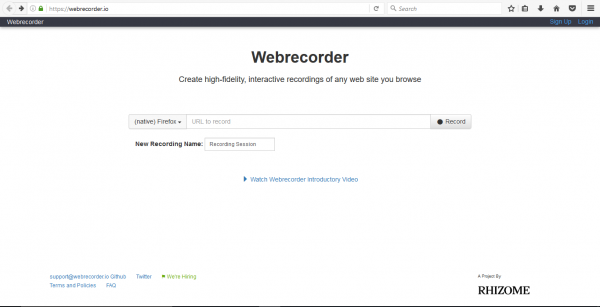
Why do people archive websites
While the reasons might be many, web archiving is particularly helpful for the following:
- Researchers who wish to keep copies of data published online so they can be used as records of information in the future, regardless of whether the web page exists.
- It could be used to avoid directing traffic to a particular site. When an internet user opens an archive, the traffic is not counted to the original site. It is helpful for those who wish to share information from a particular site without promoting it, e.g., subreddits.
- Website owners keep archives of their own websites so the data could be recovered in the future in case their website gets hacked, or they lose it for some reason.
- Archives are used to claim the copyright of past publications which usual copyright checkers might not be able to cover.
Webrecorder is one of the many web archiving software with a better interface and more user controls.
How to use Webrecorder
First, one would have to sign up for an account at webrecorder.io.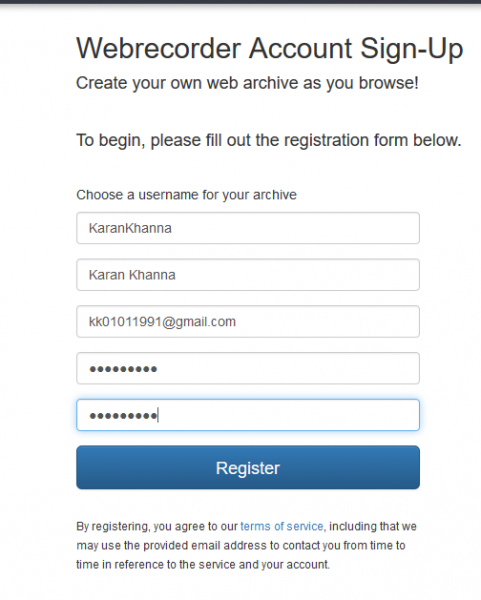
You need to register to save the archive. Once you have done this, enter the archive’s name and the link to the web page you want to record. 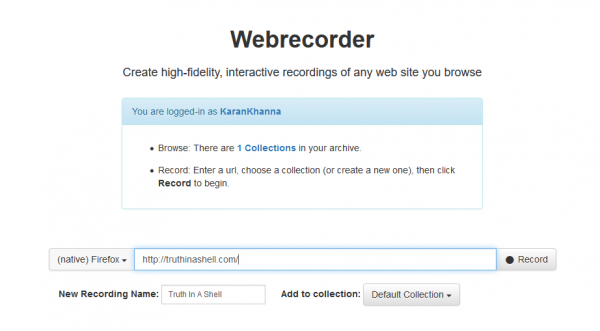
Upon clicking on the Record button, the web page will be archived. Ideally, what it records depends on the page’s structure.
Static pages are easier to archive. Dynamic pages are archived in such a manner that they retain the information—but the formatting could change in rare cases. Pages like Twitter that keep loading as and when we scroll are recorded only to the limit where the page has loaded on the browser.
Webrecorder re-arranges dynamic web pages to adjust the space. It allows bookmarking so the user could add further notes to the archive at that exact point in future.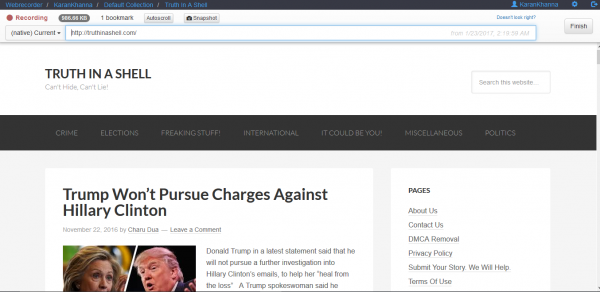
The tool also lets you create bookmarks on the page so that you can easily access certain portions of the page. This can be done by clicking on the specific point on the page that the user wishes to bookmark.
If you wish, you can also add a description to the archive could be added to understand more about the archive when referring to it in future. As shown in the image below, the bookmarks are listed under the ‘bookmark’section and the description column above.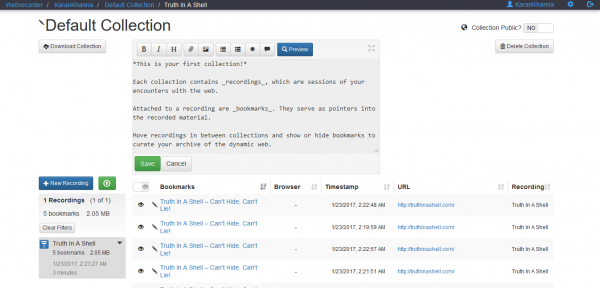
Webrecorder has an option to make a collection public or not. Choose it according to your requirements.

The option below helps toggle the URL between the URL of the page in general and the URL of the particular recording. The URL is important since that is exactly what we retain while sharing the archive. Should you wish, you can download the archived recording the option shown in the image below could be used.
Should you wish, you can download the archived recording the option shown in the image below could be used. 
Compared to other web archiving software, conifer.rhizome.org is user-friendly has more customized options for privacy settings, downloading, bookmarking, etc. You might want to check it out!
How can I archive my website for free?
There are mainly two ways to archive your website for free. If you want to check it via a third-party tool, you can head to the web.archive.org. However, you must log in to your server if you want to download an archive or everything from your website. You can create the archive and download the data to your computer. In case you don’t know, it is better to take the help of a professional.
How do I use Webrecorder?
To use the Webrecorder or Conifer, follow the aforementioned guides. First, you need to create an account with your email address, name, etc. Then, you can enter the website to record an archive. Once you’ve done that, create a bookmark on the page and add a description.
Interesting utility, will give it a try…thanks for tip!